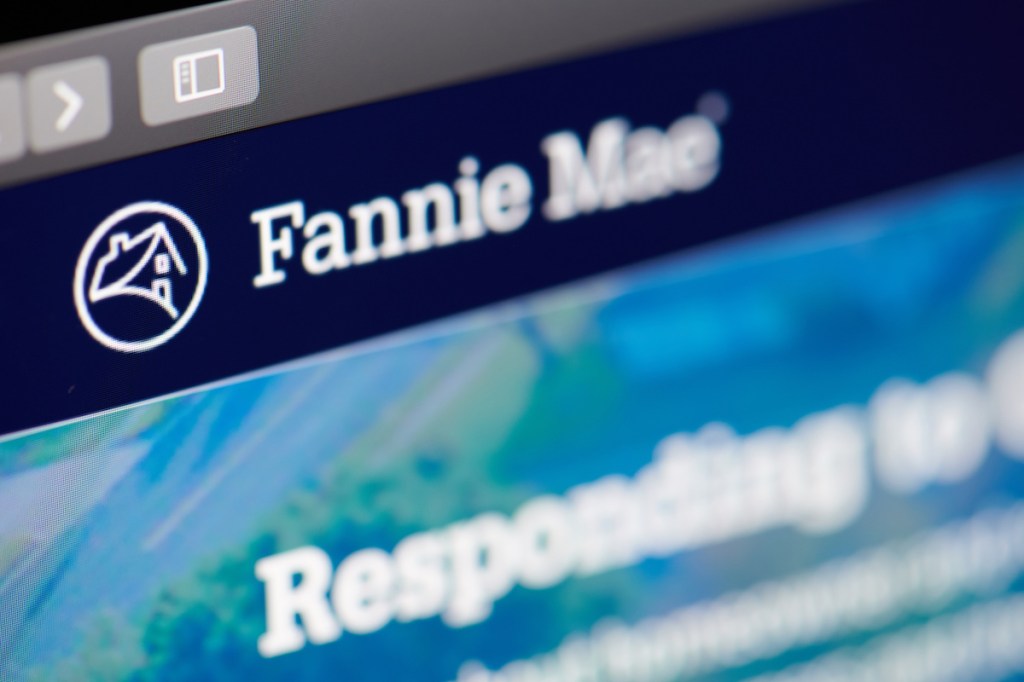The Federal Housing Finance Agency is looking to finalize a rule that would require Fannie Mae and Freddie Mac to hold higher levels of liquidity to protect against any sudden shortfalls, creating a further $10 billion cushion for the publicly held mortgage companies.
The measure – which is now up for final comment after previously having been implemented – also creates minimum funding requirements for the government sponsored enterprises.
The FHFA said the liquidity rule would provide additional security to the public in the wake of the 2008 financial crisis, when the mortgage giants did not possess enough truly liquid access or have consistent access to longer-term unsecured debt markets.
“This liquidity and funding failure, along with their low capital levels, necessitated placing the Enterprises into conservatorship,” FHFA Director Mark Calabria said in a statement Thursday. “A companion to the new capital rule, today’s proposed rule will better ensure that the Enterprises are positioned to fulfill their countercyclical mission. Requiring the Enterprises to have enough liquid assets to continue supporting the mortgage market during times of severe stress protects taxpayers and the housing market.”
The requirements proposed by the FHFA are similar to the liquidity rules foisted on big banks in the wake of the 2008 housing crisis. Following changes to the so-called Volcker rule, banks with assets over $250 billion are required to have enough liquidity to survive at least 30 days of distress.
How servicers are navigating changing compliance guidelines
Servicers must ensure their work remains in compliance not only with standard regulations but with the CARES Act and ever-evolving guidelines.
Presented by: Wolters Kluwer Financial Services
Two of the four liquidity requirements the FHFA proposed are cash-flow based requirements:
- A short-term 30-day requirement that, similar to the banking framework’s Liquidity Coverage Ratio rule, is based on a cumulative net cash outflow analysis, plus an additional $10 billion cushion requirement that must be met by highly liquid assets, like Treasury securities; and
- A 365-day requirement extending the short-term cumulative cash outflow analysis to a full year. Over this intermediate term, the Enterprises may count borrowings against certain fixed income instruments that the Fixed Income Clearing Corporation deems eligible collateral (subject to a haircut), which they cannot count under the 30-day requirement. There is no separate excess cushion required under this metric.
Additionally, there are two long-term liquidity and funding requirements:
- The ratio of long-term unsecured debt to less-liquid assets must be greater than 120%; and
- The ratio of the spread duration of unsecured debt to the spread duration of retained portfolio assets must be greater than 60%.
Current FHFA regulations do not require the GSEs to meet a quantitative liquidity standard. Instead, the FHFA evaluates the companies’ methods for managing liquidity risk on a case-by-case basis.
In its current condition, the FHFA reported that both Fannie and Freddie would meet or exceed all requirements of the proposed rule.
Beyond the liquidity standards, the proposed rule would also require Fannie and Freddie to report to the FHFA daily on liquidity compliance for the short-term, intermediate-term and long-term liquidity and funding profiles.
However, if economic or market factors fluctuate to an unspecified extent, the FHFA would modify the liquidity requirements.
The FHFA had previously issued a supervisory letter in December 2009 that established minimum 30-day and 365-day liquidity requirements for Fannie, as well as similar guidance to Freddie.
The proposal dovetails with the agency’s larger strategic plan, released in October, which spoke of increasing liquidity and competitiveness in housing finance as a key goal.
“As we have seen with the outbreak of COVID-19, a global pandemic can cause a liquidity crisis, lead to simultaneous consumer demand and business supply shocks, and cast uncertainty over the near-term trajectory of labor and housing markets,” the October report said.
After injections of liquidity by the Federal Reserve and under the CARES Act, the FHLBanks’ balance sheets – both advances and debt outstanding – fell to or below pre-crisis levels, according to the strategic plan.
In April, near the peak of forbearance request, Calabria noted that the FHFA had a contingency plan put in place when distress happens, however, they did not have a liquidity facility to provide for Fannie and Freddie.
The FHFA is requesting comment on or before 60 days after date of publication in the Federal Register.
Once finalized, the liquidity proposed rule would be effective as of September 2021.





